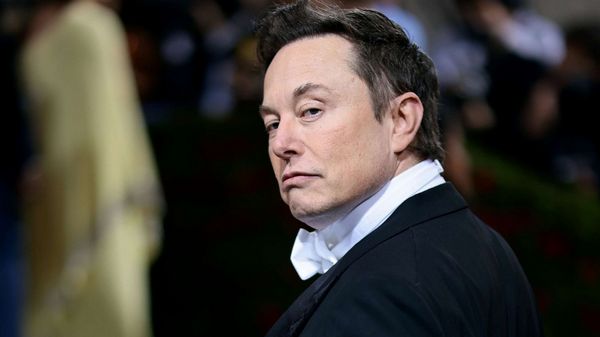Material World – Shareholder capitalism
In the last few decades the growth of institutional investors, in particular, in the guise of various kinds of funds – such as mutual funds, pension funds and, more recently, hedge funds – has been a powerful force in shaping the development of financialisation. Their large size has afforded them the leverage to impose a particular kind of financial logic on corporations with the focus very much on maximising ‘shareholder value’.
The CEOs – Chief Executive Officers – of big corporations have emerged as key agents in this trend, their commitment to the interests of shareholders having been firmly cemented and assured by means of such devices as stock options. This has had the effect of more closely aligning the interests of CEOs with those shareholders and is reflected in the astronomical rise in payouts to the former, an increasing proportion of which is, in effect, unearned income. Thus, whereas in the 1960s, America’s CEOs took home roughly 20 times what the average shop-floor worker made, today the figure is about 400 times or more.
Under increasing pressure to prioritise short-term results, managers are more inclined to make decisions that promote increased share value, such as mergers, acquisitions, and stock buybacks, rather than investment in physical production. Compliance is enforced by the threat of shareholders revolts, takeover bids by rivals or leveraged buy-outs by equity funds. The figures speak for themselves; more in the way of shareholder payouts means fewer funds available for investment, relatively speaking. According to Sam Pizzigati:
‘Between 1947 and 1999, nonfinancial U.S. companies shelled out an average 19.6 percent of their operating cashflow to shareholders, notes economist Andrew Smithers. The second half of that half-century saw stock options become an ever more dominant source of corporate CEO compensation. The 21st-century result? Between 2000 and 2017, the Smithers research finds, the average corporate cashflow to shareholders more than doubled to 40.7 percent’ (Sam Pizzigati, Aug 10, 2023 ‘Have Our Corporate Chieftains Become Expendable?’, Counterpunch).
Investment in physical production often involves certain immediate cost outlays and delayed benefits. That might require the board of directors to approve a request from the executive team to suspend dividend payouts (to the chagrin of shareholders) for the time being in order to finance this investment. Their reluctance to do this is a function of the shrinking time horizons (‘short-termism’) that businesses are subject to in an increasingly competitive world. All this has been aided and abetted by computerisation and the use of algorithms that have greatly speeded up decision making and made it imperative to adopt decisions that benefit a business in the short term with little thought of the long-term consequences.
Investing in the ‘real economy’ has the risk that in building up productive capacity one might exceed what the market is capable of absorbing – not least when your rivals might be wanting to expand output as well. Thus, it may sometimes be more prudent to simply buy up existing production capacity via mergers or acquisitions than increase that capacity yourself.
It is developments such as these that call into question the traditional image of the modern corporation as classically set out in Adolph Berle and Gardiner Means´s 1932 book, The Modern Corporation and Private Property. This seminal work helped to fix the image of the modern corporation in popular consciousness as an entity in which ownership is dispersed among numerous (and relatively inactive or powerless) and often small investors (thanks to the institutionalisation of laws such as those pertaining to limited liability that supposedly encouraged wider investment among the population by mitigating potential losses) with corporate control being decisively wielded in the hands of non-owning managerial elites.
Recent developments closely aligning the interests of CEOs with those of shareholders via the use of stock options and profit-based performance bonuses – major components in the compensation packages of modern-day corporate CEOs – have put the matter beyond doubt. Moreover, some of these compensation packages are on a scale that would certainly place their recipients in the ranks of the capital-owning class, even if only the lower rungs of that class, taking into account that a sizeable and growing chunk of that income is unquestionably ‘unearned’.
CEOs may ‘work’ but the mere fact that one works does not, of course, make one working class – any more than the possession of small amounts of capital makes one a capitalist. There is a certain point at which a change in quantity (in this instance, with respect to how much capital one possesses) translates into a change in quality or kind (from worker to capitalist).
In other words, and contrary to what the managerialist paradigm asserts, what we are seeing here is a convergence, not a divergence, of ownership and control. The top echelons of corporate management are, in effect, being steadily absorbed into the capitalist class. Alternatively, you could also see this as a case of members of that class taking on a more (pro)active managerial role in their companies for various reasons.

An extreme example of this would be someone like Elon Musk who, as well as having a personal fortune of $190 billion to his name, is said to have enjoyed a ‘compensation package’ involving performance-based stock options from the electric vehicle manufacturer Tesla, (of which Musk is the CEO), exceeding US$10bn in 2021. Clearly, this individual has no need to work whatsoever given the size of his personal fortune. It’s just that he chooses to do so for reasons we can only speculate on but are not, in themselves, important.
In short, then, capitalism has morphed from something like the kind of managerial capitalism that commentators like Berle and Means had in mind back in the early 20th century to today’s full-on ‘shareholder capitalism’.
ROBIN COX
